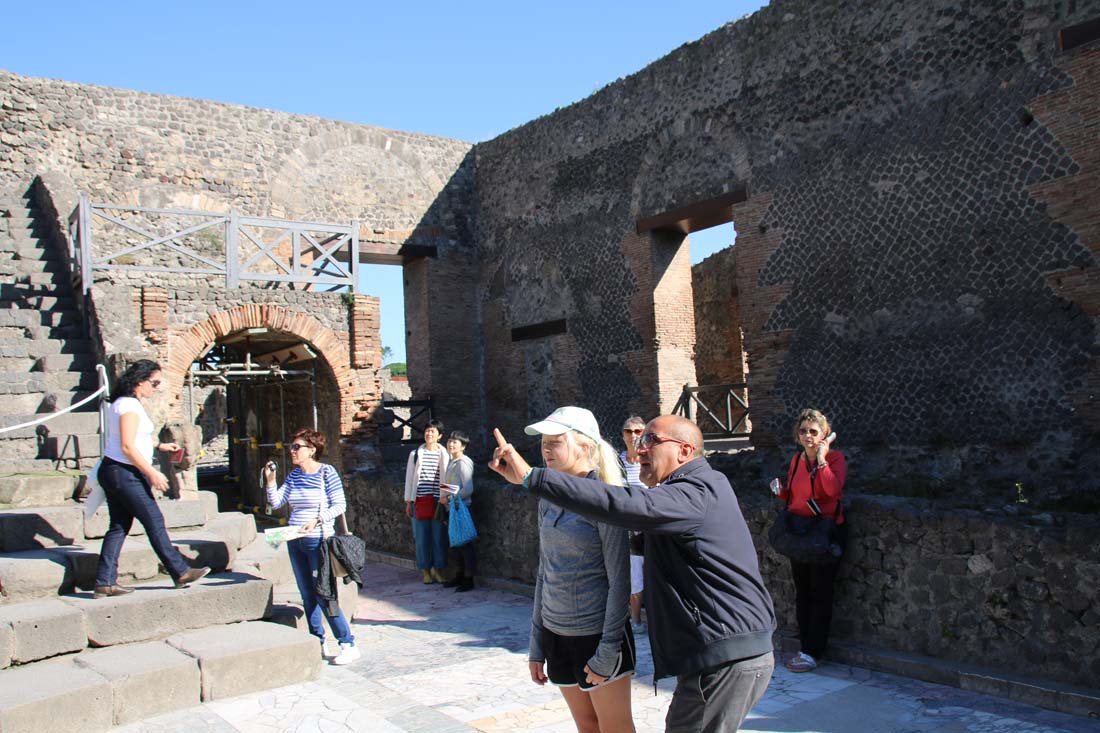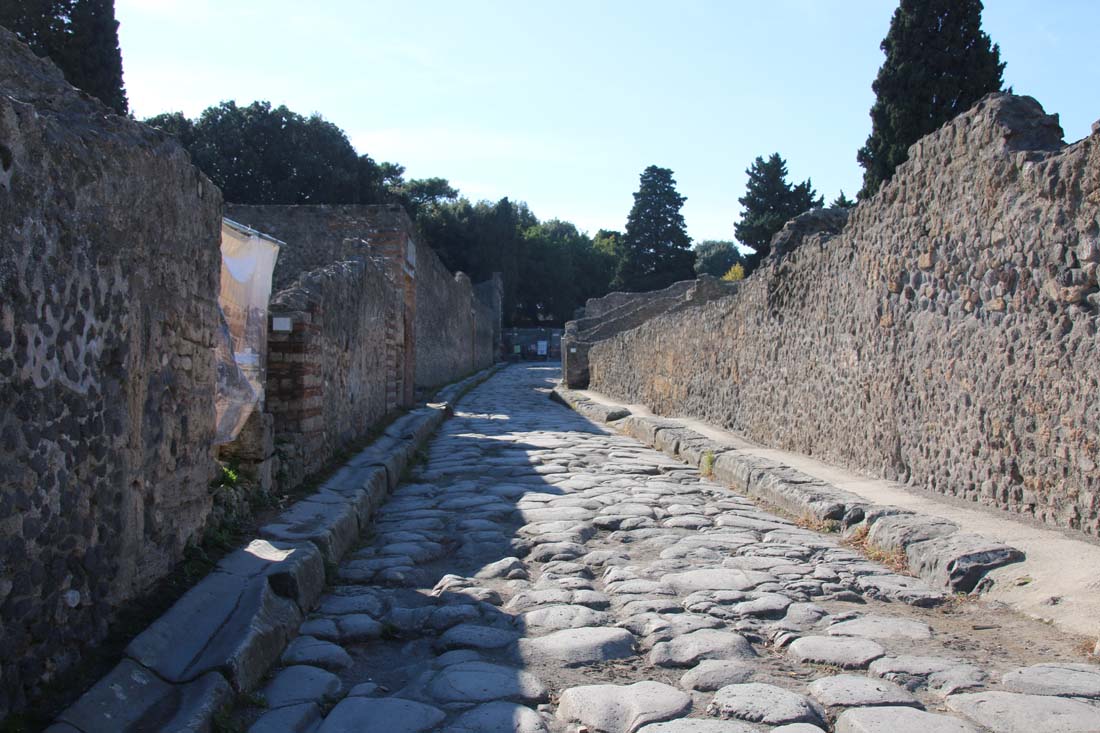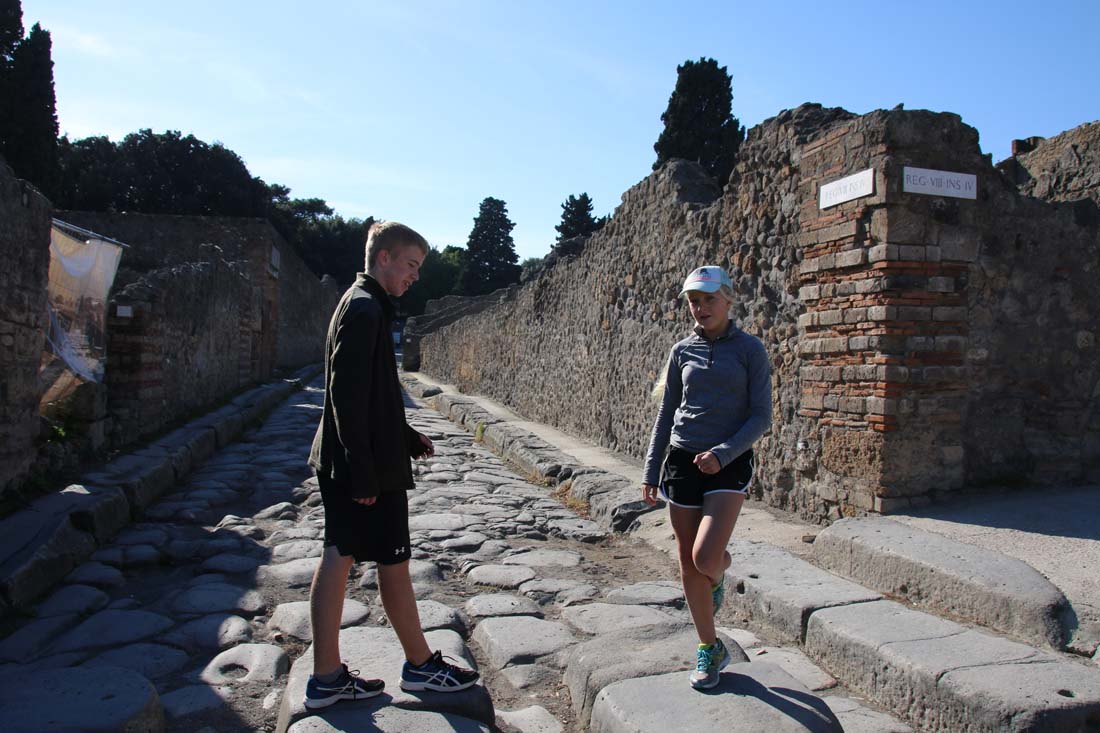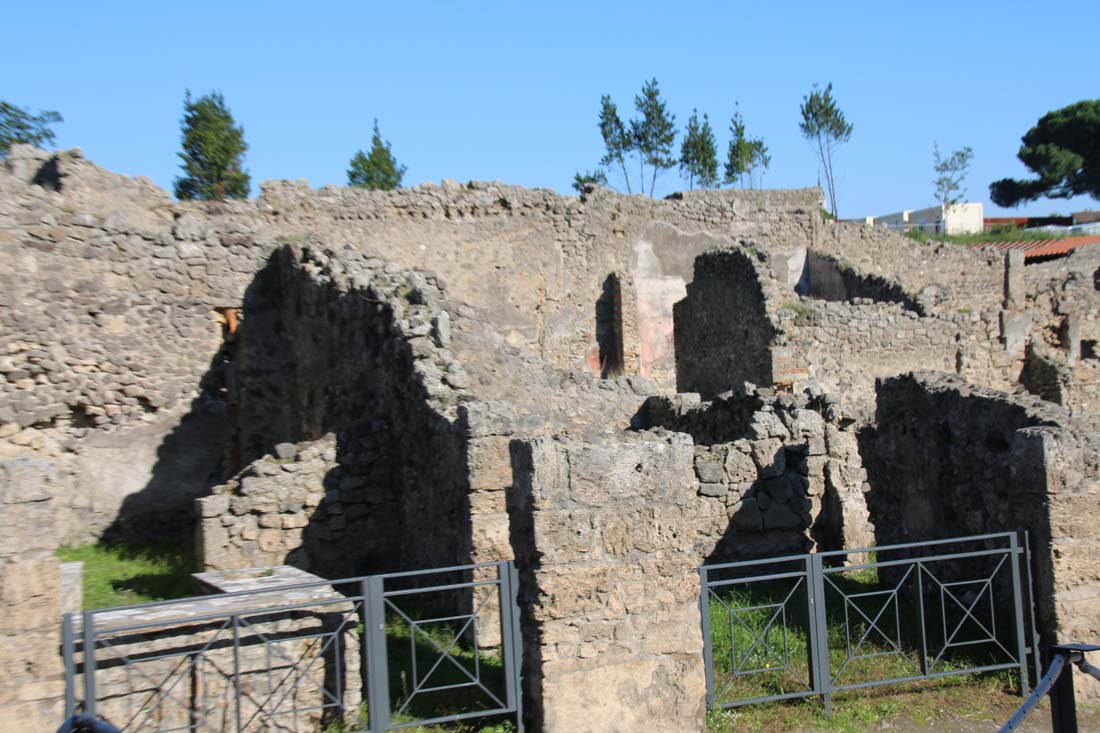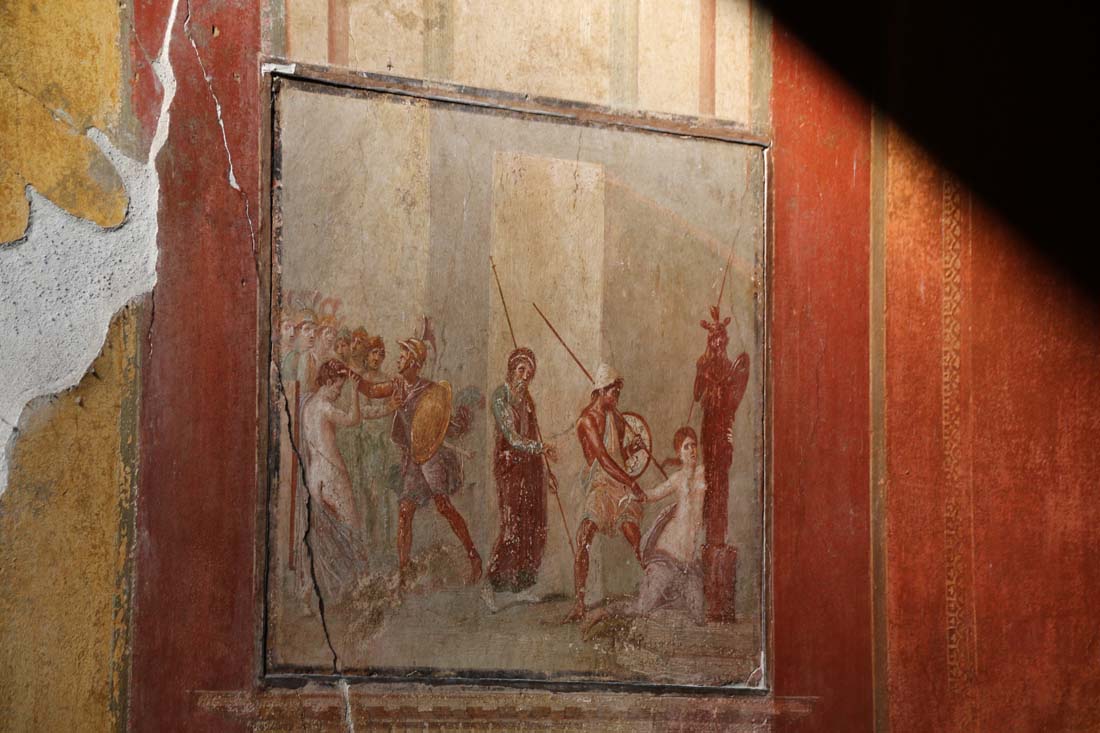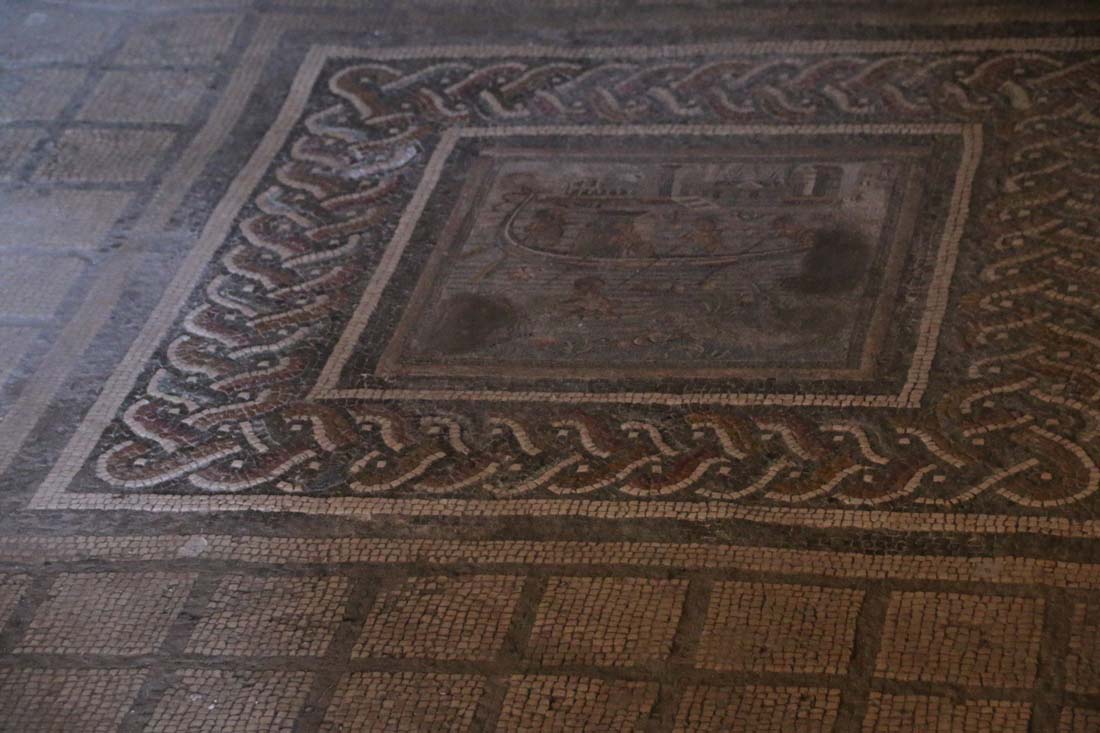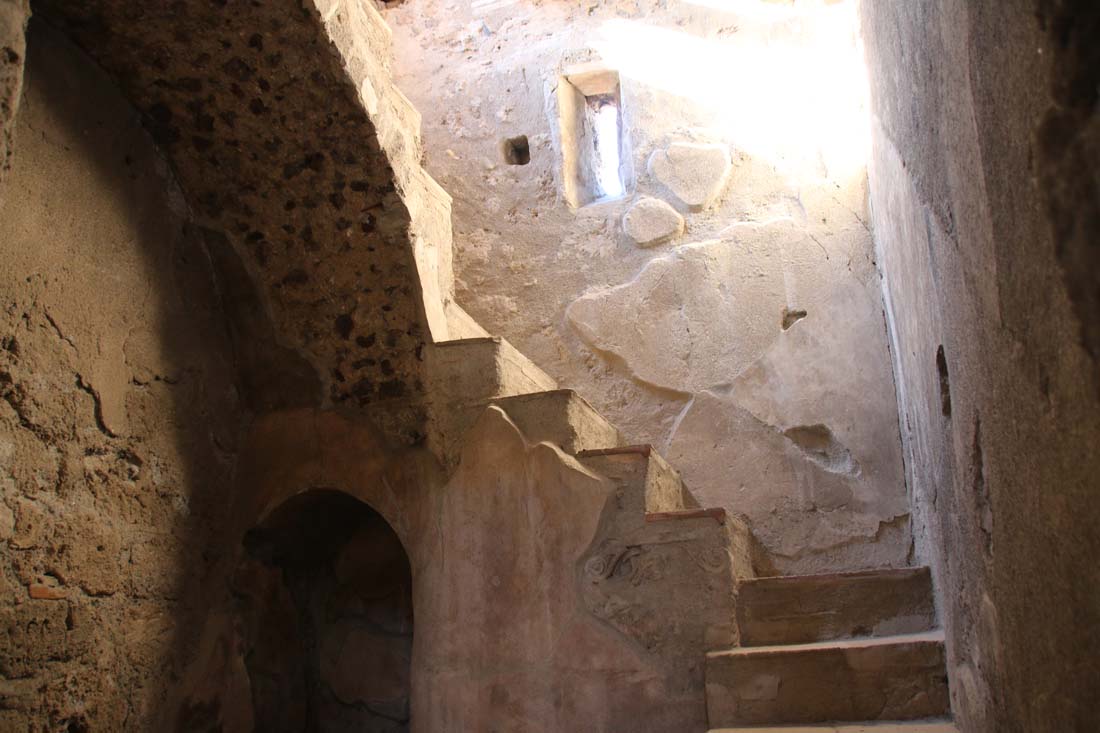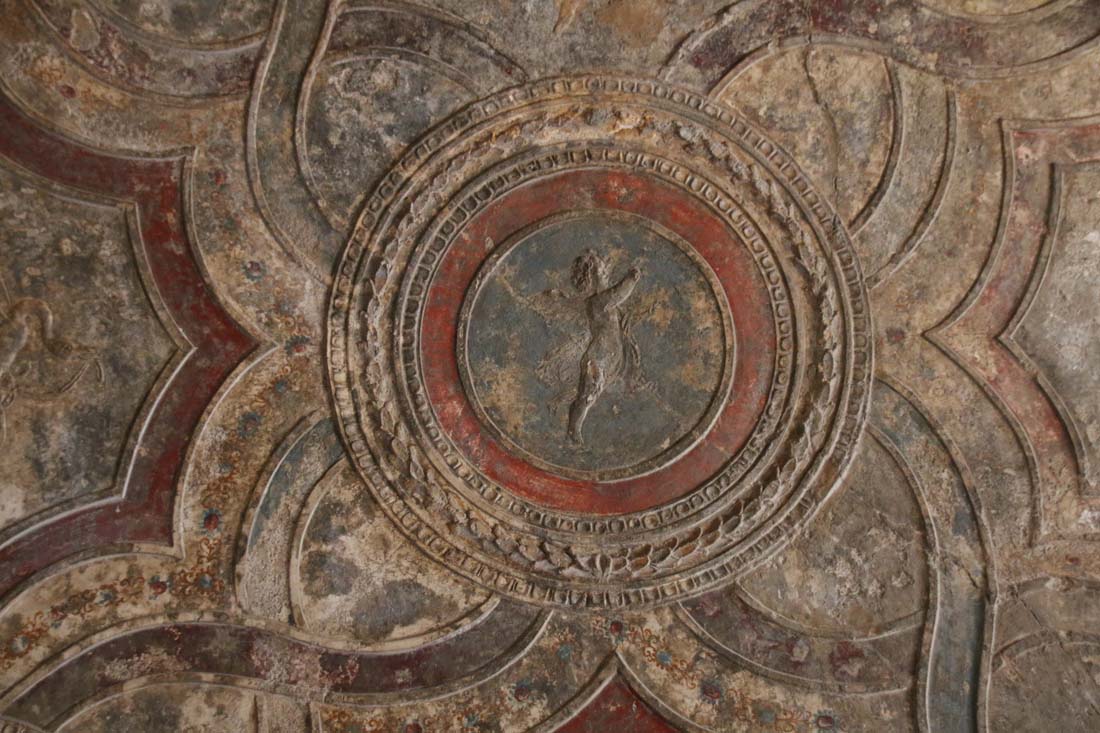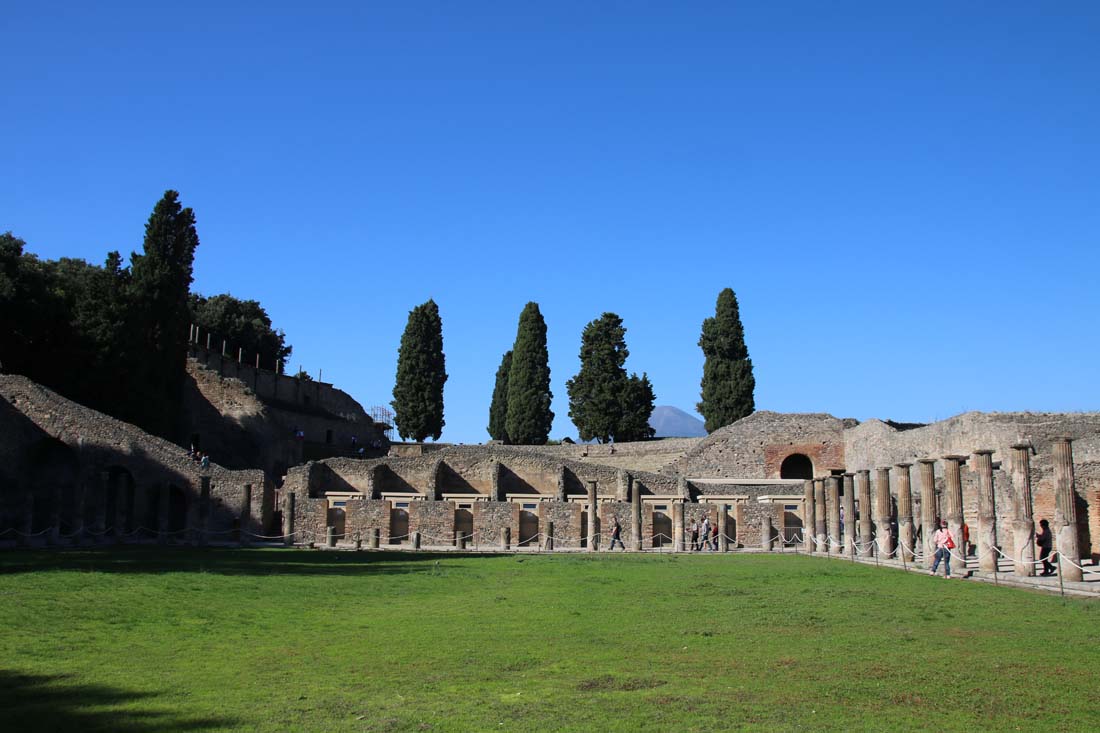 Adventuriety / Inspirietry
Adventuriety / Inspirietry
We visited Pompeii today. I am learning a lot lately about all kinds of things, one of them being history, and the other is that sometimes a good tour guide makes all of the difference. When we planned our trip to Italy part of the draw was the historical smorgasbord. The kids are both studying World History, which I seemed to have missed in school, and Scott loves Roman ruins of any type. Rome had a lot of ruins to see and that part was easy, all you have to do is take a walk and look in any direction. The hard part is imagining what used to be and understanding the story; ruins are like reading every forth or fifth page of an information rich, slightly confusing book. I had learned a good lesson with Palatine Hill, the Roman Forum and the Colosseum; me reading a guide book is not that fun for anyone, me included, so get a guide. Onto Trip Advisor I went and found Tours of Pompeii and Lello, our wonderful teacher. Lello met us as we walked out of the train station and right away started telling us that Italians only use crosswalks as decorations for the road and if you want to be killed (keeled) in Italy just cross the street, it’s the most dangerous thing to do and I believe him.
The people of Pompeii had no idea that they lived in the shadow of a volcano when Mt. Vesuvius erupted in 79 A.D. and buried the thriving city in ash. A whole culture was well preserved and forgotten underneath approximately 20 feet of ash and not rediscovered until the 16th century. The metal scaffolding in this picture reinforces a deep cannon that illustrates how deeply the city was buried.
The Romans enjoyed cheering on the gladiators, music and theater. This is where around 250 slaves were kept and trained to fight as gladiators. If they were really good they got sent to Rome.
Lello is demonstrating the “microphone” in this amphitheater to Ashley. There is one green stone on the floor of the stage and when you stand on it your voice is amplified.
Theater and music would be performed here. Cheap seats were at the very top. The large stones near the bottom, roped area are where the middle class (who were very wealthy) would watch in reclined positions. The politicians (wealthiest of all) had their own box seats and private entrances.
The statue of Atlas holding up the world decorates the amphitheater. You can see that there is a lot of scaffolding and restoration work everywhere in the city of Pompeii. The city is about 165 acres in area, but only 70% has been excavated and now preservation of what has been uncovered is most pressing. Weather, tourism, and pollution are detrimental to its conservation.
These are the roads that the Romans built and the large stones are the crosswalks. Why are they elevated you may ask? There was always a lot of stuff and water on the roads. Stuff? People threw everything onto the streets (we’re talking everything) and there were the horses too and the stuff they left on the streets. The city was on a hill and the streets were built as a drainage system. There were huge concrete holding tanks fed by the aqueducts at the tops of the streets. They were filled up and then opened up and the water pressure would push all of the stuff down the streets and out of the city. This was an everyday occurrence.
Pompeii was built on a grid system.
This was the most dangerous intersection in the city because it is near the lower side. When it would rain (and still when it rains) the water pressure is very powerful. Modern drains have actually been installed in this area to make the roads safer during rainstorms.
These were shops along the street where people could buy food and drinks. If the shop owner was very wealthy his doorstep was made of marble, some of which is still visible.
The largest bakery in the city. The holes in the stone wall indicate the wooden supports of a roof.
It is so amazing to me to see these ancient frescoes. This is inside of the home of a very wealthy (middle class) person.
Just one of the tile floors in the same house.
These painting are everywhere in the homes of the middle class.
An ancient staircase in the same home. Lello called this his house.
The sidewalks and often hallways in homes of the wealthy were imbedded with little pieces of marble to reflect the light from the moon or other sources of light and illuminate these surfaces at night.
This was one of the large stone basins that could be filled and then opened to wash the streets. People also collected their water here (of course not from this modern faucet).
This cupid is part of an elaborate ceiling in the main bathhouse of Pompeii, another past time of the citizens of Pompeii.
This pose was Lello’s idea. He was so great at keeping the kids completely engaged. He would tell us something and then ask questions. He called us Mama Daisy and Papa Scott. If you look between Ashley and I you can see the basin that was filled and emptied to clean the streets. These were all over the city.
This was like the court house near downtown Pompeii. I love the columns. Like many of the ruins all over Italy, Pompeii has been picked apart, looted and repurposed over the years. It is still absolutely incredible to walk the same streets and imagine what life was like thousands of years ago in this town; the energy, creativity, vision, skill, artistry and beliefs are so vividly apparent. I wonder what people will marvel at 2,000 years from now and if these ruins will still be visited.



